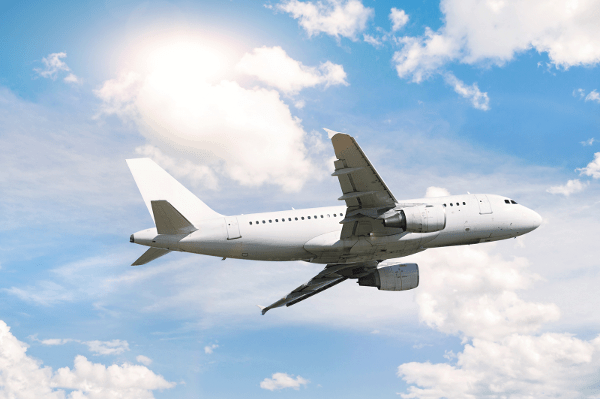This article is written by Mahelaka Abrar, a student, from Faculty of Law, Aligarh Muslim University. This article discusses the air and space laws governing different nations mentioning the principle aspects of international air and space laws, its borders, problems one faces while crossing borders, the jurisdiction of courts, etc. It also sheds light on the effect of liberalisation on such laws, the future of such laws and the possible solutions that can be adopted perceiving the need of the hour.
Table of Contents
Introduction
The history of aviation and space activities is a long drawn one. Both of these activities started as a competition. Around a century ago, the pioneers of aviation were challenged to fly an aeroplane. In July of 1909, Monsieur Bleriot crossed the English Channel and became the first man to do so covering a distance of 21 miles from Calais in France to Dover, England. In 2004, the British spaceflight company, Virgin Galactic won a competition to become the first space company to launch space tourism that is spaceflights to space tourists and suborbital launches for space science missions. As a consequence, it could be said that both aviation and space-related activities began and perhaps can only begin by stimulating the human mind to move beyond the given boundaries, both physical and intellectual.
The eminent Professor Daniel Goedhuis was appointed to teach air law at Leiden University in 1938. It is from this time onwards that this subject matter gained intense academic attention. Furthermore, a professional committee was also chaired in 1947 with an extension to space law in the year of 1961, something which wasn’t done before. The launching of first satellite Sputnik 1 into outer space by the USSR added further momentum to this field of study.
Air law became the principal field of attention after Professor Wassenbergh gestured at the start of a liberalisation process in air transport in the US in 1978. This was followed by a similar state of events in Europe.
Principle aspects of international air and space law
The Chicago convention of 1944 is the basis of today’s system of civil aviation. The Convention provided for the formation of the International Civil Aviation Organization (ICAO) and gave it a legal form with detailed articles. The contracting states of the convention, which are 198 in number now recognize that each and every state has total and exclusive sovereignty over the airspace of its territory. Some of the principal aspects of International air and space laws are enshrined therein. It is also discussed hereunder:
Nationality of an aircraft
- Article 17 of the Chicago Convention provides that, “Aircraft shall have the nationality of the State in which they are registered”.”
- Article 18, on the other hand, says that aircraft may not be registered in more than one State.
- Article 31 and 32 further require registering States to provide such aircraft with a certificate of airworthiness and issue certificates of competency and licenses for pilots and flight crew.
The right to fly
The Chicago Conference of 1944 intended to provide rights for aircraft of the contracting states of Chicago Convention, whether engaged in scheduled air services or in non-scheduled flights, to fly into one another‘s territories. Some compromise was also reached for non-scheduled flights, which in practice, however, has been honoured more in its breach than its observance. This fact has been manifested in the failure to reach agreement on a multilateral exchange of rights for scheduled international air services by providing that they can be operated into a contracting State‘s territory only with the latter‘s authorization. The privilege covered by such authorization is often divided, in the jargon of the industry, into a number of so-called- freedoms of the air. The first two such freedoms consist of “transit right”, namely the right of transit without landing, and that of “transit with stops” only for technical purposes.
Role of the Council
The Council is a legislative body that consists of 36 elected countries. It makes international air law after due diligence and a process based on consensus. Over the years, the numerical strength of the council has increased from 21 to 36. The key function of the Council is making of Standards and Recommended Practices (SARPs) which form as Annexures to the Chicago Convention. It is made from very technical issues of navigation to security and facilitation issues including passport types. The council is also assisted by an elected Air Navigation Commission in its decision-making process.
Airspace sovereignty
The airspace sovereignty basically reaffirms the principle of international law that every State has complete and exclusive sovereignty over the airspace above its territory. This general rule is used in regulating almost all of the problems concerned with international law, such as entry of an aircraft, passengers and cargo, departure of an aircraft, crew and jurisdiction over them for any regulatory purpose for the application and enforcement of civil, criminal or international civil aviation rules and regulations.
Hijack policy
The government of India, after the approval of its Cabinet Committee on Security (CCS), adopted the Anti-Hijack Policy in 2005 to deal with the serious problem of hijack of Indian and foreign aircrafts. The policy, inter alia, signifies that no foreign aircraft which has been hijacked is to be allowed to land in India. Further, if an Indian aircraft has been hijacked, it will be forced to land in India and after the landing, every effort will be made to prevent it from taking off again. If any suspicious activity is felt to have been done by the aircraft, the ATS (Anti-terrorism squad) Watch Supervisory Officer is required to bring it to the notice of the Joint Control and Analysis Centre (JCAC) of the country which is manned by the officials of IAF.
Moreover, the aircraft will be branded as ‘rogue’ if it does not cooperate in the communication with the ground controller and as ‘threat’ if it aligns itself to a deliberate target like the Parliament or the Rashtrapati Bhavan. After an aircraft is declared as a ‘threat’, the CCS is allowed to shoot down the aircraft. The CCS, in such cases, is considered to be the apex body of handling and taking decisions. However, if there is a situation of emergency, the Prime Minister, Minister of Defence or even an IAF official (above or of the rank of Assistant Chief of Air Staff) are empowered to take this decision.
The terrorist attack of 9-11 not only brought to light fundamental glitches in security systems and procedures but also shed light on the new modus operandi of terrorist organisations of using aircrafts as guided missiles. The policymakers all over the world were shaken at the apparent ease at which terrorist aircrafts were brought down to the building of the World Trade Organisation (WTO) and thereafter attacked. It also led them to abandon their popular belief that skies were a safe place. The apprehension of states, including India led to the formation of such stringent policies in every country to tackle future attacks. Although the Hijack policy, in its strict literal sense, is dissonant with the Chicago Convention and the Indian Constitution, it cannot be denied that such rules are also the need of the time.
The borders of air and space law
The convection, in addition also specifies the definition of “territory” as the land and adjacent territorial waters of a country, covered by sovereignty, mandate or protection of the state. Each and every aircraft operating in the international spaces are required to have the appropriate nationality and registration marks. Accordingly, to cross the state border, it is necessary for one to obtain permits issued by the competent state authorities. In the case of civil aircraft, it must be taken from the President of the Civil Aviation Office, while in case of military aircraft, the Operational Commander of the Armed Forces is to be consulted.
Each state, using its sovereignty, may introduce regulations for foreign state aircraft that carry out air operations in their air spaces. Therefore, on the basis of aircraft performing aerial operations in airspace of other countries, ammunition and war equipment cannot be transported without the consent of the authorities of that state. Each country is obliged to establish regulations which govern the transport of hazardous materials and ICAO regulations. In addition, all countries have the right to introduce regulations and restrictions to ensure public order and transport safety over their territory. However, it should be done in such a way as not to restrict air transport and equipment as well as navigation systems on the aircraft necessary for the safety of air navigation.
According to the Multilateral and Bilateral Air Transport Agreements Section 5 of the Transit agreement, and Section 6 of the Transport Agreement, provides that every contracting state has the right to withhold or revoke a permit granted to an air transport enterprise of any other State if it is not satisfied with the fact that substantial ownership and control is not endowed in nationals of a contracting State.
This clause or statement is considered of utmost importance by countries when entering into bilateral agreements. It has also become a major deterrent to ownership of cross border Airlines. This trend has been in continuance in all the agreements including the modern “Open Skies” agreements. Analogous to the earlier requirements, the modern “Open Skies” agreements also require substantial ownership and effective control to be endowed in the State which is designation the airline, and if there is a failure to meet this crucial requirement, it would entitle either of the nations to revoke, suspend or limit the operations of the concerned airline.
Problems one faces while crossing borders
Every sovereign country holds the right to protect and regulate its air space under many international laws related to air sovereignty. Just like the policies of “high seas” related to maritime law, the horizontal boundaries of airspace are somewhat similar to it. A country can also take on the responsibility of safeguarding and controlling International Airspaces such as the Pacific Ocean with international approval or agreement.
The security of air law has been maintained by closing national airspace so that scheduled international air services of foreign companies could be operated. Without the permission of a state, a foreign operator is not allowed to enter its national airspace. Failure to adhere to the rules may invite serious national and international consequences including escorting of the concerned foreign aircraft to forcing the foreign aircraft to land at an airport. This unusual event is often witnessed two to three times at Dutch airspace per year.
During the two major World Wars, non-scheduled aircrafts were seen hovering over many parts of the world. Hence, the two significant aviation conventions, the Paris Convention and the Chicago Convention were convened to meet out such challenges. These conventions may be regarded as the constitution of international civil aviation, for the post World War II world. It contained basic principles for all the international air services for respecting airspace boundaries of nations and following methodologies of safe operation.
The Chicago Convention has created rules that close national airspace of countries by constructing legal boundaries between nations in the absence of physical boundaries such as rivers, lakes, sea, mountains, etc. These boundaries can only be opened upon an agreement between the concerned states. This is one of the significant reasons for making air and space laws a principal branch of law as nations around the world have a public interest with respect to their air transport system and space system. It needs to be under their supervision and guidelines.
In the aftermath of the occurrence of 9/11 at the WTO in New York City, many states including the United States demonstrated the methodology of how states react or should react when their crucial security interests are hindered due to the vulnerability of airspace ( because of its transparency). The US government closed its airspace for three days after 9/11 in the interest of security. It also became signatory, along with several nations of many conventions and committee regulating airspace of nations.
Jurisdiction of courts
Criminal jurisdiction
Some elements of the national law are still stuck to the view that ships and aircrafts are part of the national territory, which is a mere delusion and raw metaphor. There are three types of state jurisdiction:
- Territorial jurisdiction: It covers the national territory including all persons living in the territory and things inside the territory.
- Quasi-Territorial jurisdiction: It covers all national ships and aircrafts including all persons living in the territory and things inside the territory.
- Personal jurisdiction: It covers all persons under State’s protection and their property. In case of dispute among the above-mentioned jurisdictions, Territorial jurisdiction will overrule the Quasi-Territorial jurisdiction and in the same manner, Quasi-Territorial jurisdiction will quash the personal jurisdiction. As long as the aircraft flies over the airspace of some state, the law of that particular state is applicable to it. But when the aircraft flies in the international airspace, and some crime is committed, it creates a problem of jurisdiction. And it is always difficult to pinpoint, when and where the crime was committed and accordingly which State’s law would apply to it. But then in 1963, at Tokyo in “Convention on Offences and Certain Other Acts Committed on Board Aircraft”, it was held that the contracting States should extend their criminal jurisdiction of the aircraft when they’re outside the national territory. This Convention also empowered the aircraft commander to ensure law and order in their aircrafts and to disembark the violators respectively.
Civil jurisdiction
In most of the nations, the overall civil law applies, except as modified. In the interest of averting statelessness, most states confer their nationality on those born on aircraft of their registry; but in air law, there is no general principle of the law of the flag (i.e., the law of the state of registry) being applicable to all the occurrences on board. There are, however, several international agreements and conventions that have a good amount of affect in the administering of civil jurisdiction by states. Some are mentioned here.
The most significant is Article 28 of the 1929 Warsaw Convention on International Carriage by Air, as subsequently modified by Article 8 of the 1961 Guadalajara Convention and exaggerated by Article 12 of the 1971 Guatemala City Protocol.
Under Article 28, an action emerging from an “International” carriage by air is also brought only before the courts of particular contracting states and no others. The 1933 Rome Convention on Precautionary Arrest of Aircraft, which was not widely accepted and implemented, gives exemptions to aircraft used on government services or in commercial transport from precautionary attachment.
Similarly among members of the ICAO ( International Civil Aviation Organization), the Article 27 of Chicago Convention states that subject to particular conditions, aircrafts of the contracting states in the international airspace are exempted from seizure or arrest on patent claims in the airspace or territory of other contracting states, without having to deposit the security amount. In the Rome Convention, on Surface Damage, in 1952, it was held that the actions may only be brought to the Courts of the contracting states where the damage has occurred.
The impacts of security on the development of air and space law
Ideally, Air Laws and Space Laws are poles apart on the ground of the principles of Sovereignty, as in case of Airspace, the principle of Sovereignty of the State applies. Whereas in the case of Space Laws, the principle of Sovereignty of the State doesn’t apply to it. Because the Outer Space is considered as “ the province of all mankind”.
Generally, Security is the matter for which a State is responsible – so, the State plays a vital role in Air Laws and Space Laws. Also, the channel in which Air and Space activities are performed is a vulnerable one, as both of them are transparent and diaphanous. And also in absence of physical and natural barriers such as Mountains, Seas, Oceans, etc., in airspace, the aircrafts glides over different airspaces.
As an analogy of the transparency of both Airspace and Outer Space, there is no physical barrier between National Airspace and Outer Space. Air and Space lawyers believe that the Airspace ends at 100 Kilometers from the Earth and from which the Outer Space starts. However, there is no boundary line between these two mediums. In the wake of development of commercial space activities, it is necessary to decide and regulate the distinction between the two for better development and smooth administration.
In the outer space, the Satellites, telescopes and other spacecraft are used for various purposes like for Military Service, Meteorological Services and for various scientific purposes. This facet of the Airspace and Outer Space elucidates the relevance of security and of national policy.
Key differences between air and space law
Air law and space law are two different and separate branches of law but occasionally treated as one (Aerospace Laws). Out of which, air law is the body of public law and private law both, that manages aeronautical ventures and other utilization of airspace. While space laws synchronize activities of government and private organizations in outer space.
The origin of space law can be detected by the launching of Sputnik I by the Soviet Union. This was the first earth artificial satellite to go in space. Since that era, the space activities have largely been regulated by the UN Committee on Peaceful Uses of Outer Space. There are many space laws incorporated in five main treaties. Out of which, the most important is the Outer Space Treaty of 1967 which laid down many principles:
- Freedom of access to and use of outer space.
- Prohibition against claims of national territory by any nation in outer space.
- And prohibition on placing Weapons of Mass Destruction (WMD) in outer space.
The vital difference between the air law and space law originates from the legal status of the international airspace and outer space. While the airspace, (except over the high seas and Antarctica) remains under the sovereignty and control of subjacent States, the outer space is controlled by the regime of freedom. There’s no boundary allocation between airspace and outer space. It is expected to be allocated soon. It is expected that the boundary will be placed below the 100km parameters of sea level.
The impact of liberalisation on the development of aviation law
From its start (between 1910 and 1920), the law of aviation was neatly put in along the lines of two significant air transport agreements that was open to all the nations of the world. These agreements were the Paris Convention of 1919 and the Chicago Convention of 1944. These bilateral agreements provided access to foreign airspace of another nation for the purpose of operating international air services. In this respect, it is not wrong to say that air law is a part of public international law as crucial economic interests of the nations are/ were safeguarded by this system.
In the contemporary world, the borderline of safeguarding crucial national security and national economic interest is fading every day with the advent of the concepts of liberalisation, privatisation and globalisation. However, the operation of air services (which is the major part of the aviation sector) is probably the only sector which has not been brought under the umbrella of the World Trade Organisation and the General Agreement on Trade in Services (GATS). This will probably remain the same for the years to come.
From 1978 onwards, the US introduced the deregulation process. The US started its own cross-border liberalisation process in phases. This movement forced many nations to open their air transport markets forgetting about any national or vital economic interests. This was considered a unique venture which was completed in 1997, the moment on which all intra-community services were made available to community air carriers. Perhaps unsurprisingly, international air law and European community law did not form a natural bond.
Some efforts towards liberalisation
- The stepping stone by EU to unified airspace was laid in the decision of the European Court of Justice in 1985 which rendered approval of airfares by a member state as unlawful. Further, the Schengen Agreement implemented in 1995 enabled free crossing of the border across the EU member states.
- The APEC Agreement Kona Accord (2001) included optional provisions removing any ownership requirements, and substituted effective control and principal place of business requirements.
- The OECD (2002) model all cargo template: Irrespective of the nationality of the airline’s majority owner, the carrier would incorporate itself in a certain country, and operate under its regulatory control. EU is an emerging institution which is snatching away the sovereignty of its member states in a lot of respects. The main trend in the aviation sector of the EU is a common sky policy and the right to participate by the EU in all bilateral negotiations of its member states.
- The 2002 EU Court of Justice decision was that under the right of establishment provisions of community law, no member state may conclude a bilateral air transport agreement that excludes any community carrier from operating on the traffic rights provided under the bilateral.
- The 2003 ICAO Fifth Worldwide Air Transport Conference drafted a model clause for insertion into bilaterals that focused on an airlines principal place of business and effective regulatory control. Permanent residence was an optional requirement. Australia and New Zealand have created a common aviation area.
Future of air and space law
We stand at the threshold of a new area of aviation and space law. There is an amazing future for space and air laws given the technological advancements that are occurring with every passing day. With every successful and progressive scientific discovery, there is triggering of new concepts and ideas on the interpretation and application of the already existing traditional knowledge and legal concepts.
The Chicago Convention has governed the rules of air and space laws for years. However, with the coming of WTO, the Chicago Convention requires a fresh look. The reason behind this is that while WTO covers trade in services and aviation as a service falls within that domain, on the other hand, the Chicago Convention lays emphasis on the concepts of sovereignty and bilateralism. WTO emphatically points out its beliefs in carrying out trade and services between states without any discrimination.
WTO and Chicago Convention
There is an immense theoretical difference between the Chicago Convention and WTO. With the advancement of the world, nations have realised that a restricted and protected regime of air services causes more harm than good to one’s economy. Overprotection of national airlines against foreign airlines can be proved detrimental to one’s own economy. In the practical world, liberal bilateralism between nations leading to open sky or regional open sky agreements is gaining recognition with each passing day. Nations can be seen shifting from restricted bilateral agreements to open sky agreements. Therefore, the theoretical difference between the Chicago Convention and the WTO are narrowing down automatically.
The distinction drawn between the nationality of an aircraft and of the company of an airline drawn in 1944 is becoming blurred. There has been increasing cross and joint ownership which is making the concept of ‘substantial ownership and effective control’ difficult to implement. With time new definitions are being propounded. The concept of flag carriers is being replaced by the concept of airline as any other industry. The need of the hour is to recognize the fact that the airline industry is a very capital intensive and competitive industry.
Aviation security
It is the duty upon each and every sovereign nation to provide security to its people but within its boundaries. However, with the changing nature of security, like civil aviation security which is not limited to one’s own country but spreads across countries, security cannot be regarded as a sovereign function alone.
Post 9/11 ICAO had managed an Audit of National Aviation Security on a voluntary basis of all members, but it is inadequate and insufficient. A global approach to security is the need of the day and there is a need for interoperability of security personnel. The Universal Security Audit Programme (USAP) was launched by ICAO in 2002 in a six-year cycle to provide high standards of security, quality control, training and certification of auditors.
Suggestions and conclusion
The air and outer space is an opportunity as well as a challenge to the global world, particularly for the major developing countries. There are still many discrepancies and changes that need to be addressed. Some of the suggestions are mentioned below:
- To tackle the problem of air hijacking in a lawful way, development and study of air and space law is also highly significant. Air crimes can only be reduced and security therein be increased by using clauses and rights mentioned in conventions and agreements.
- Outer space including celestial bodies are the common heritage of mankind and therefore they must be treated so and should be used for peaceful purposes.
- States should claim their exclusive sovereignty over their personal air space but not on other’s airspace or claim any sovereignty over outer space.
- The airlines operating under the umbrella of conventions or agreements should benefit enormously from more liberal and favorable access to international routes and should be given ample competitive advantage over other airlines that continue to operate in the traditional restrictive regimes. This is a major cause why many countries have been pulled into the game and multiple liberalization endeavours have emerged around the world. This also becomes a contributing factor of ensuing globalization and liberalization of the modern world economies.
- Modern aerospace technology allows aircraft to operate efficiently and safely under a very wide range of conditions, to areas and climates throughout the world. The developed countries use air and outer space more than developing countries because technologically developing countries are less advanced. Therefore, for equitable and appropriate use of air and outer space an even air and outer space law and its study is required.
- With a massive increase in international air travel which could not have been thought of in 1944 along with seamless integration of domestic and international travel the issues of aviation security become a global concern. As a consequence, no state can now claim that domestic aviation can remain a domestic concern. Therefore, a greater degree of integration of the two securities is needed to make international travel safe. The answer to this lies in amendment of the Chicago Convention to allow ICAO to inspect domestic security too.
References
- http://nludelhi.ac.in/download/publication/2015/Current%20Developments%20in%20Air%20and%20Space%20Law.pdf
- https://shodhganga.inflibnet.ac.in/bitstream/10603/175518/6/06_chapter%201.pdf
LawSikho has created a telegram group for exchanging legal knowledge, referrals and various opportunities. You can click on this link and join:
















